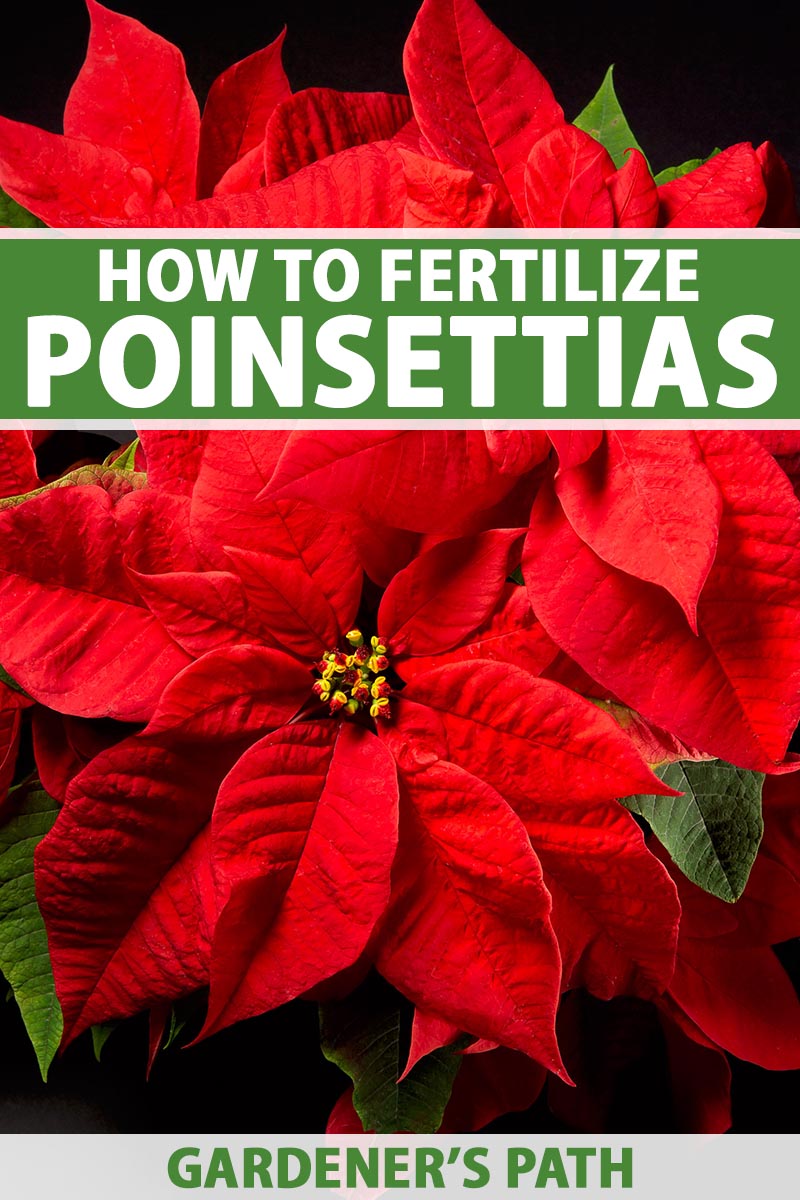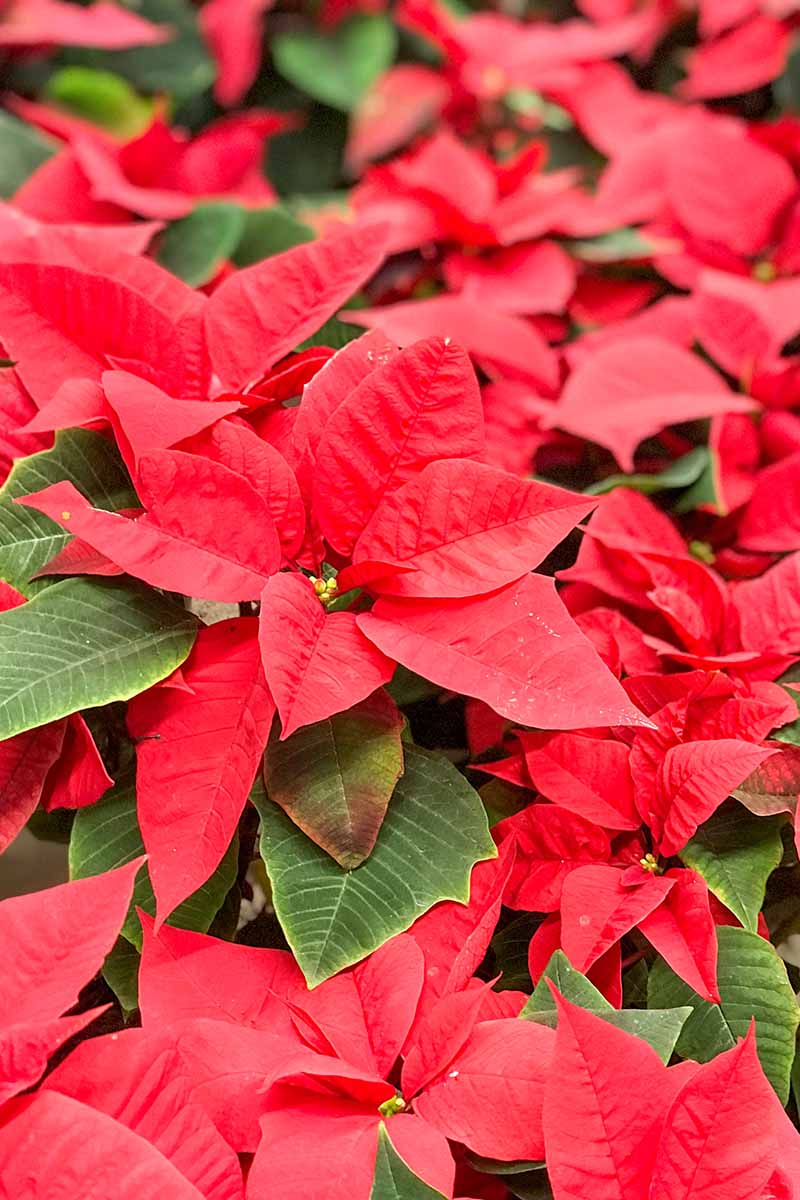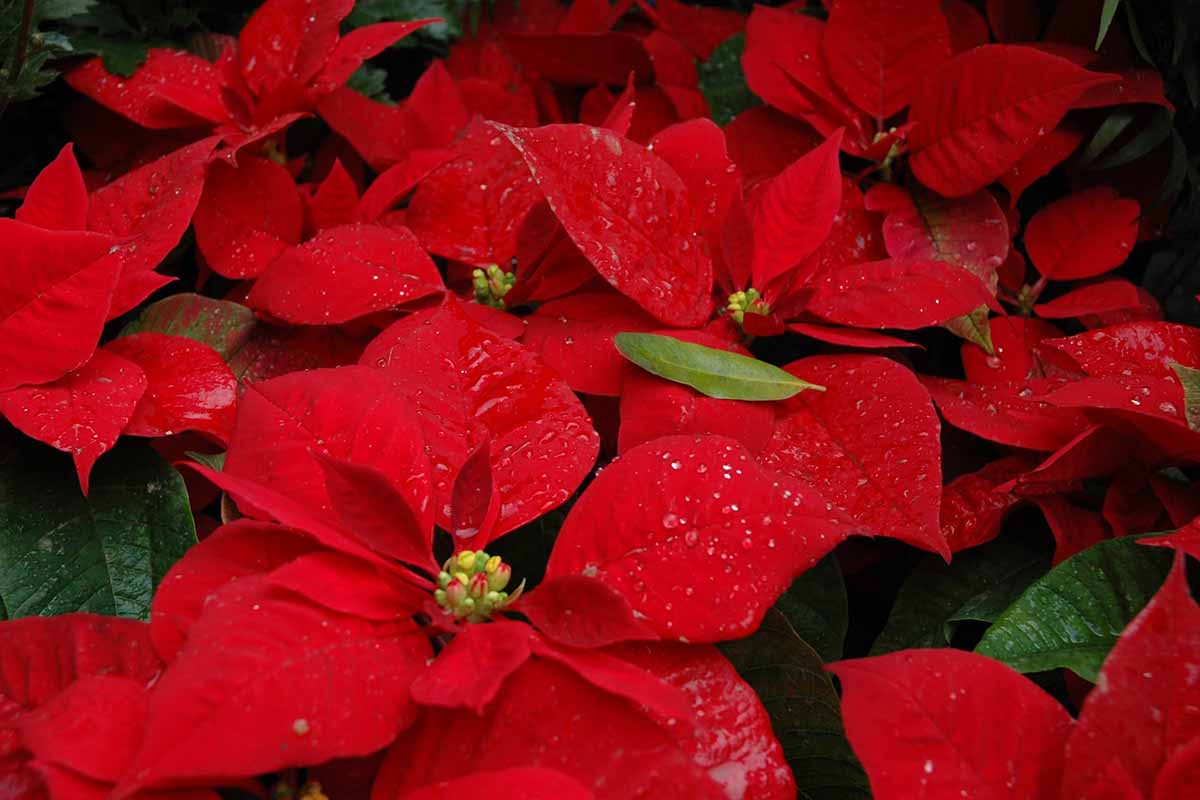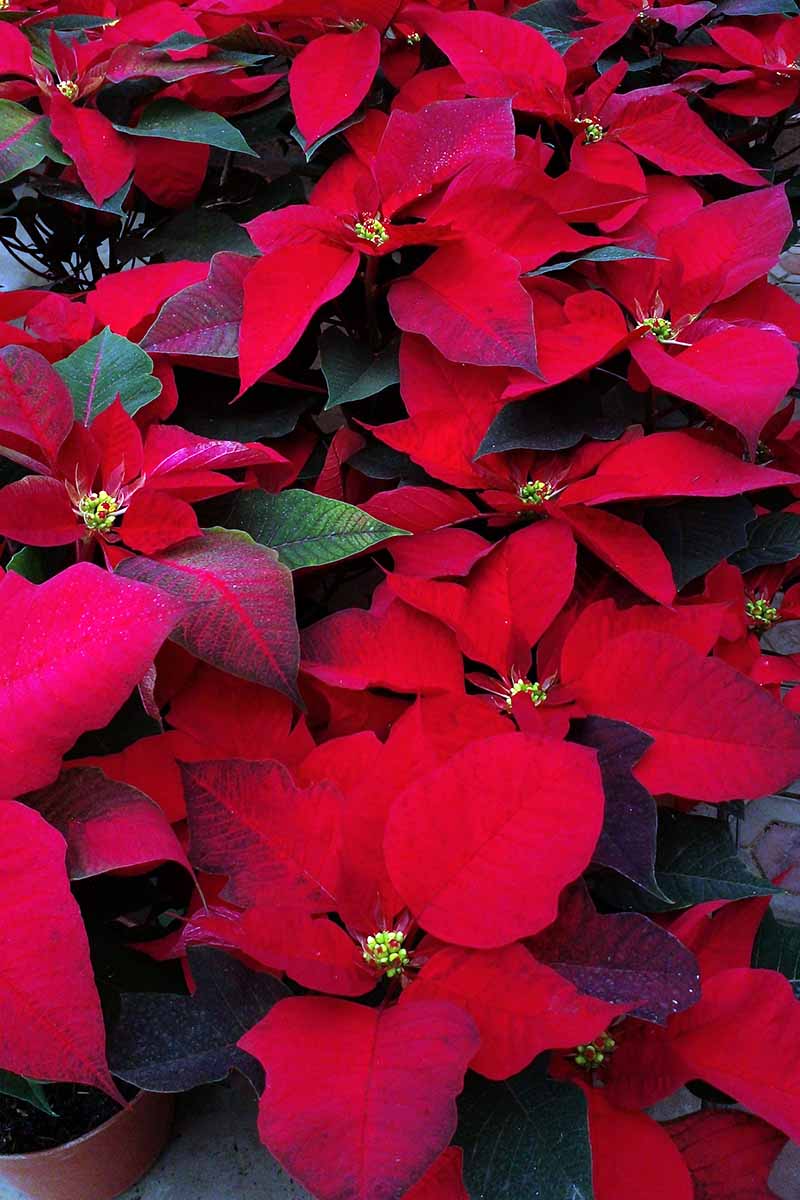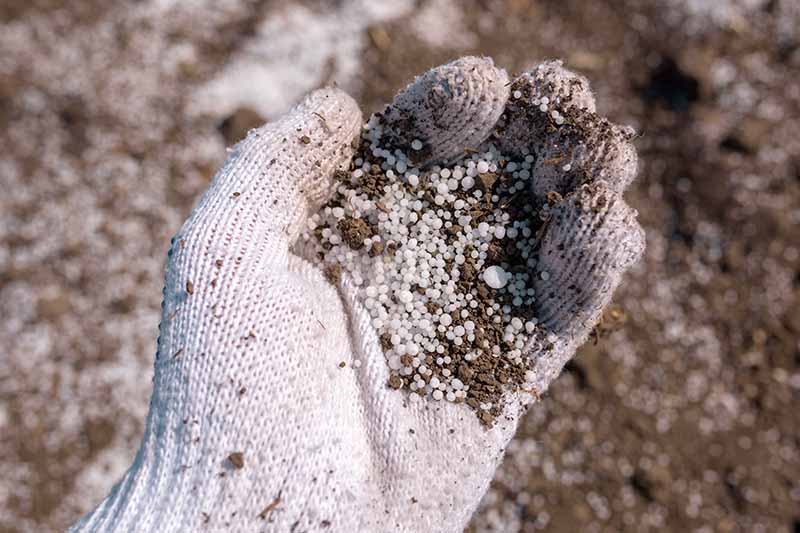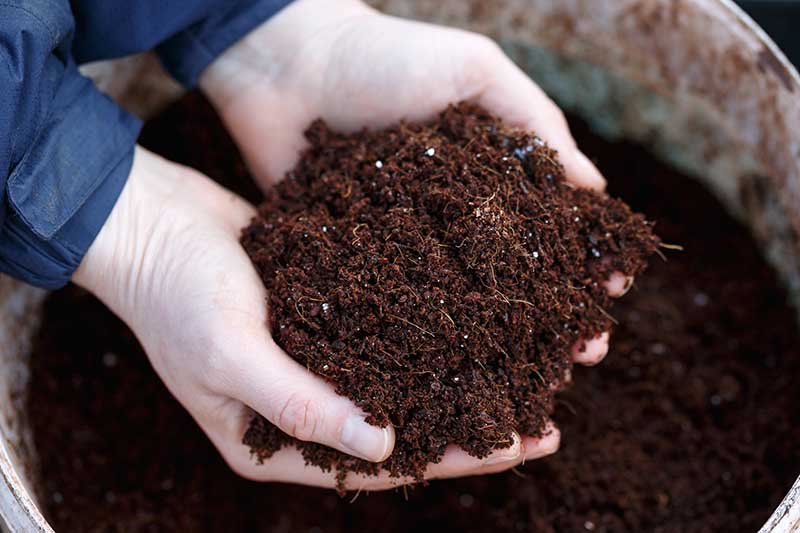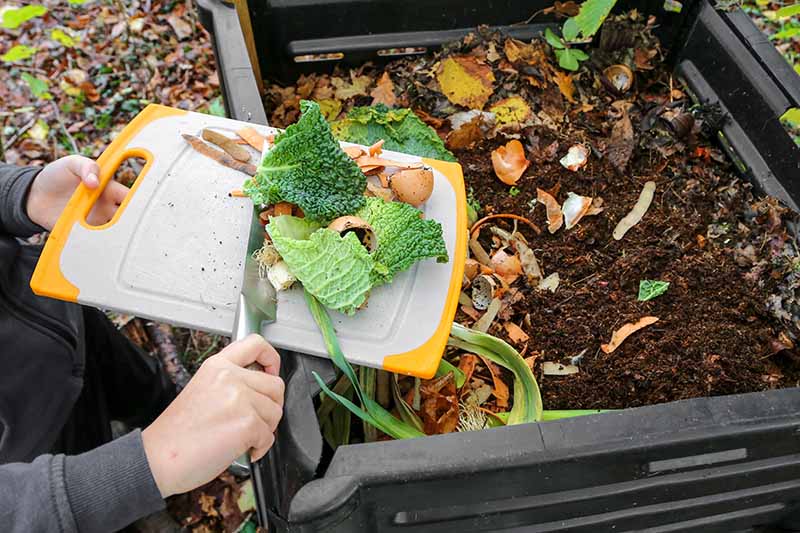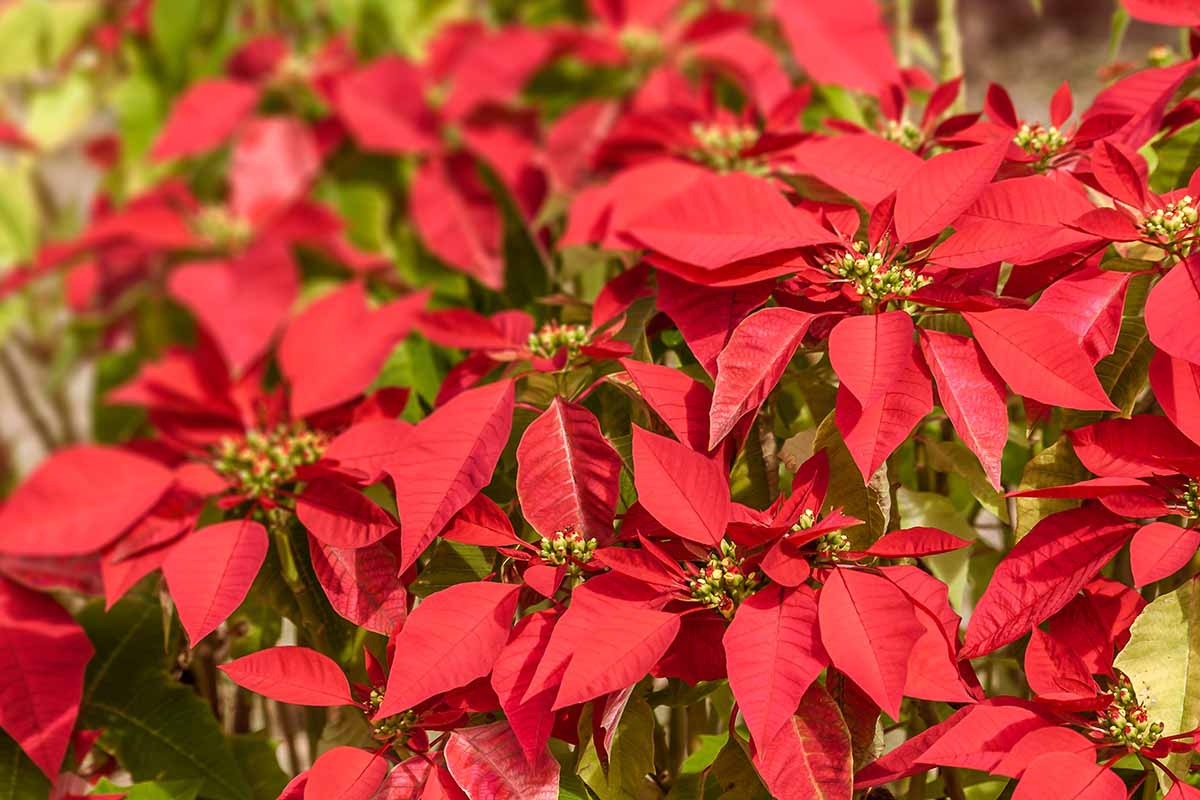Even when it’s not in bloom with colorful bracts, its foliage is quite striking, and once the topmost bracts develop bright holiday hues in wintertime, the plant becomes even more of a knockout. But such a fantastic display would be impossible without proper fertilization. We link to vendors to help you find relevant products. If you buy from one of our links, we may earn a commission. Without occasionally restocking these minerals, Euphorbia pulcherrima will start to suffer. And a plant that’s deficient in a few key nutrients can go from stunning to sad “real quick,” as we say here in the Midwest. But a Midwesterner saying “real quick” is anything but, and a sad poinsettia is not a hopeless case. In this guide, we’ll cover how and why to fertilize these plants, along with what you’ll need for the task. We’ll even throw in some additional reasons why, for those in need of extra motivation! Here’s all we’ll cover up ahead:
Why Fertilize Poinsettias?
“Why?” is a question worth asking, whether you’re fertilizing poinsettias or in line at the Apple store, eager to get your hands on the latest iPhone. But unlike waiting for the iPhone 83 SE Pro Max Plus – or whatever model they’re up to by the time you’re reading this – fertilizing E. pulcherrima is time well spent, for a few reasons:
Aesthetics
When a poinsettia’s nutritional requirements are met, it has all the resources it needs to produce gorgeously colorful bracts for the holiday season, and vibrant greenery. Conversely, a nutritional deficiency will drain the beauty from a plant’s foliage faster than the Sonic the Hedgehog spins after a quintuple-shot of espresso.
Vigor
Speaking of quickness, a properly-fertilized E. pulcherrima will grow at its maximum rate. Much like a Ferrari needs all of its parts in order to zip around the track, a poinsettia needs all of its essential nutrients in order to rapidly enlarge and develop new structures.
Health
All of the above doesn’t matter if the poinsettia is beset with pests or pathogens. Luckily, fertilization is a reliable way of defending your E. pulcherrima from health issues, since properly-fed plants are able to withstand infestation and infections much better than when they’re deprived of necessary nutrition. Need a refresher on how to grow these festive beauties? Check out our growing guide for cultivation instructions.
What You’ll Need
In order to carry out this all-too-necessary poinsettia care procedure, you can’t go in empty-handed. Here’s what’s required:
Humus
“Awesome, I love Greek food! Will we also need Pita brea–” Hate to burst your bubble, but you’re thinking of hummus… I’m talking about humus, which is the dark organic matter remaining in the soil after flora and fauna decompose. It’s way less tasty to us than the chickpea-based Mediterranean dip, but plants such as E. pulcherrima absolutely love it, for a variety of reasons. For one, it improves soil structure. When organic matter is added to the soil, it clumps soil particles together into aggregates, which sit atop each other like marbles in a jar, gumballs in a gumball machine, or the plastic spheres in a germ-infested McDonald’s ball pit. There’s space between the aggregates just like there is between marbles or gumballs, which allow plenty of room for roots, air, and water to infiltrate the soil. Additionally, humus increases a soil’s ability to hold water. When humus forms aggregates, it creates a film around the soil particles that absorbs moisture like a sponge. Poinsettias in particular appreciate this, since they love sitting in moist soil. And finally, humus improves fertility via an increase in the soil’s cation exchange capacity (CEC). This isn’t an addition of actual nutrients, but rather, an augmentation of the soil’s ability to provide available nutrition to plants. Let me explain: Nutrients such as magnesium and potassium are cations, i.e. positively charged ions, which stick to negatively charged particles such as organic matter or clay – both of which have a high CEC. Soils high in these high CEC components are able to hold onto and provide more nutrients than soils void of humus and/or composed of a low CEC material such as sand. But a soil’s CEC doesn’t influence its ability to exchange anions such as nitrate or sulfate, which are easily swept away by rain or irrigation. Long story short, CEC is a measure of nutrient mobility, rather than the total nutrition in the soil – and it’s this nutritional mobility that makes humus quite important. You can make a potting mixture with organic material that provides ample fertility and nutrient uptake for potted plants with a 2:1 mix of peat and perlite.
Fertilizer
If I can compare a poinsettia to a pro athlete’s nutritional regimen for a moment: humus represents a diet rich in whole and unprocessed foods, while fertilizers are the vitamin supplements. For the most part, a healthy intake of organic matter covers a plant’s nutritional bases, but sometimes a supplement is needed to address specific deficiencies. Just like an athlete probably wouldn’t want to eat a block of cheese that’s rich in fat and protein solely for the purpose of hitting their calcium intake goals, you wouldn’t want to heap mounds upon mounds of nitrogen-, potassium-, and phosphorus-rich compost onto the soil to solve a plant’s deficiency if the problem can be narrowed down to a single micronutrient. In poinsettias, deficiencies manifest in different ways. A lack of calcium shows up as bract necrosis, leaf edge burns, and weak stems. Molybdenum deficiency exhibits symptoms of interveinal and marginal necrosis in recently mature and middle-aged leaves. Low levels of magnesium cause interveinal chlorosis on lower leaves, and low potassium results in smaller bracts and stunted growth overall. Not that every fertilizer is composed of a single nutrient, of course – there are many fertilizers that are considered “complete,” meaning they have all three of the primary plant macronutrients: nitrogen, phosphorus, and potassium. Or N, P, and K, as they’re commonly labeled on fertilizer packaging. Some include mineral micronutrients as well, while others do not. Fertilizers are either organic or synthetic. The former is made of naturally-occurring materials like kelp meal, blood meal, or worm castings, while the latter is composed of mined or manufactured compounds such as ammonium sulfate and potassium nitrate. Along with being sustainable, organic fertilizers tend to release nutrients slowly for prolonged soil enrichment, and these also provide secondary and/or trace micronutrients, which help to keep a plant’s overall nutrition balanced. Synthetic fertilizers, while they may be cheaper, come with some notable drawbacks over organic ones. They tend to deliver unbalanced nutrition when applied in a thoughtless manner, and can harm the beneficial microorganisms that reside in soil. It’s also easy to over-fertilize potted plants with synthetic fertilizers, which can lead to a buildup of salts and subsequent fertilizer burn. Plus, synthetic fertilizers often release their nutrients quicker than organic products, which can lead to fertilizer burn: a drying-out of the roots paired with yellowed, wilted, and dying foliage. The ideal pH for an E. pulcherrima is 5.8 to 6.2, because this is the range where essential micronutrients such as calcium, magnesium, and molybdenum are most available. Something as simple as homemade compost will get the job done, as well as packaged products like this organic and all-purpose 4-4-4 NPK fertilizer, which is available from Burpee. All Purpose Granular Fertilizer Before you feed your plants, it can be helpful to know the nutritional makeup of your soil. Otherwise, how will you know what it needs? But this is traditionally done for ground soil in the landscape and garden. Potted plants won’t usually necessitate a soil test, and container-grown plants can easily be repotted into new soil if they’ve outgrown their container and the soil or soilless mix filling the container has become compacted or depleted. You could always test the potting soil on your own by utilizing a DIY soil test kit if you’d like to know what you’re working with. But again, for indoor gardening, this isn’t typically necessary. Luster Leaf Soil Test Kit
When and How to Feed Your Plants
It goes without saying that fertilizer type, timing, and technique are all extremely important. Targeting these to prevent deficiency is a great idea if you’re growing poinsettias, and most packaged potting soil comes within this pH range. Unless you’ve worked coffee grounds into your containers, experimented with adding leftover wood ash, or done some other creative feeding with your poinsettia’s potting soil, extreme pH problems are unlikely. Adding aluminum sulfate or sulfur to the soil outdoors can make it more acidic, while adding lime will make it more alkaline. In-ground plantings grown in garden soil can also be amended with organic matter every year in the springtime. Two to four inches of well-rotted manure or compost – worked into the soil above the root zone – should do the trick. Rather than using humus, you can fertilize container-grown plants every three weeks in spring and summer with a complete houseplant fertilizer diluted down to half-strength. Jack’s Classic Houseplant Fertilizer Make sure to apply according to package instructions. Stop all fertilizer applications during dormancy – no new growth means no need for fertilizer.
Poinsettia Care: Nutrition Edition
In addition to leaving cookies and milk out for Santa, you’ll also have to provide some readily bioavailable nutrients for your poinsettia plantings this holiday season. Poinsettias will look their best, grow robustly, and function at peak health with proper fertilization. There’s no doubt about it: the elbow grease put into this task will pay dividends! Have any questions or remarks? Put ’em in the comments section below! Sharing insights or inquiries is super helpful to other readers as well, so don’t be shy! Consider yourself a poinsettia poindexter? Nerd out with some more E. pulcherrima guides:
35 Favorite Poinsettia Cultivars for Your HomeAre Poinsettia Plants Poisonous?How to Care for Poinsettias After the Holidays
